
Parowan is a city in and the county seat of Iron County, Utah, United States. The population was 2,790 at the 2010 census, and in 2018 the estimated population was 3,100.

Casa Grande Ruins National Monument, in Coolidge, Arizona, just northeast of the city of Casa Grande, preserves a group of Hohokam structures dating to the Classic Period (1150–1450 CE).

The Beehive House was one of the official residences of Brigham Young, the second president of The Church of Jesus Christ of Latter-day Saints. The Beehive House gets its name from the beehive sculpture atop the house. In 2020, the Beehive House and other historic sites on Temple Square were closed to the public due to the COVID-19 pandemic.
Jesse N. Smith House may refer to:

The Henry J. Wheeler Farm is a farmstead in Murray, Utah, United States, that is one of the few remaining late 19th century farmsteads in the Salt Lake Valley that has not been lost to expanding housing developments of metropolitan Salt Lake City. It has been listed on the National Register of Historic Places since 1976.

The Brigham Young Winter Home and Office is a historic residence and museum located in St. George, Utah. Brigham Young was the foremost Mormon pioneer and second president of The Church of Jesus Christ of Latter-day Saints, who led its members to the Utah Territory. As Young grew older, his arthritis precluded him from spending winters in the Salt Lake City region, so a winter home in St. George, in the arid Dixie region of Utah, was built for him. Young seasonally occupied the home and office from 1873 to 1876. The building was eventually deeded to the division of Utah State Parks and Recreation; it is now open as a museum where missionaries of the Church provide guided tours.
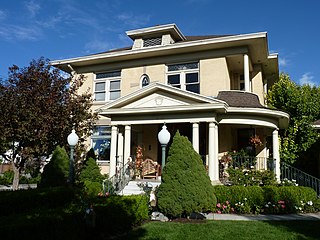
The Thomas N. Taylor House is a historic house located at 342 North 500 West in Provo, Utah. It is listed on the National Register of Historic Places.
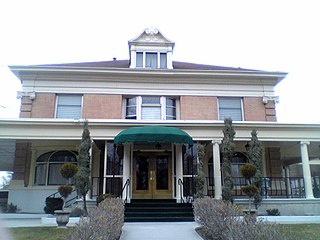
The Jesse Knight House, also known as the Knight Mansion, is a historic house in Provo, Utah, United States built for Jesse Knight. It was built in 1905, and added to the National Register of Historic Places in 1982. This home was designated to the Provo City Historic Landmarks Register on June 19, 1996.
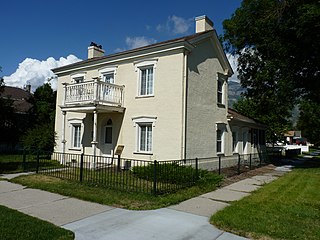
The Clark–Taylor House is a historic building located in Provo, Utah, United States. It is listed on the National Register of Historic Places. It has also been known as the T. N. Taylor Home. One of the oldest pioneer buildings in the state, the Clark–Taylor House was built around 1854. Thomas N. Taylor, a Provo Mayor, LDS bishop, and stake president, along with being a chairman of the board of trustees of BYU, lived in this home. The Clark–Taylor House was designated to the Provo City Historic Landmarks Registry on March 7, 1996.

The Knight–Allen House is a historic house located in Provo, Utah. It is listed on the National Register of Historic Places.
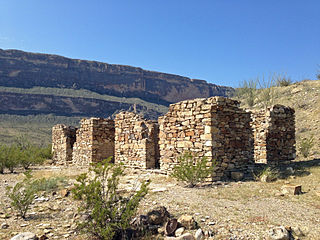
Rancho Estelle was the home of James Sublett, one of the first large-scale farmers in the Rio Grande valley of Texas, within what is now Big Bend National Park. Prior to founding the ranch, Sublett and his partner, Clyde Buttrill, farmed the bottomlands along the river in the area of what is now known as Castolon or La Harmonia, downstream from the later ranch. After the partnership with Buttrill broke up, Sublett bought four sections of land, initially calling it Grand Canyon Farms, and later Rancho Estelle.

The Provo Downtown Historic District is a 25-acre (10 ha) historic area located in Provo, Utah, United States. It is listed on the National Register of Historic Places.

The Parowan Meetinghouse, sometimes referred to as the Parowan Tabernacle or the Parowan Old Rock Church is a historic meetinghouse of The Church of Jesus Christ of Latter-day Saints in Parowan, Utah, United States, that is listed on the National Register of Historic Places (NRHP).

The Rinckel Mansion, at 102 N. Curry St. in Carson City, Nevada, is a historic house built in 1872. It was home of Mathias Rinckel, a merchant in Carson City. It was designed and built by Ecole de Beaux Arts-trained architect Charles H. Jones.

The William and Julia Lyman House in Parowan, Utah was constructed in c. 1895. Constructed by William and Julia Lyman, the house is common for an eighteenth-century American building construction. It is one of the few remaining houses of its kind in Parowan.

The Meeks-Green Farmstead in Parowan, Utah was listed on the National Register of Historic Places in 1994. The listing included four contributing buildings and one contributing structure.

Eagar Townsite Historic District is a section of the town of Eagar, Arizona which has been designated a National Historic Place. Sitting on roughly 54 acres, the site contains 37 structures, 21 of which have historical significance. The period of significance is from 1886, the year the townsite was founded, through 1942, which represents the significant period of development of the town. The site was added to the Register on July 23, 1993.
A pair-house is a three-room house found in the US built in the 19th century by Scandinavian immigrants as an adaptation of common houses from their homeland. Commonly found in the US state of Utah, pair-houses are historically significant as being representative of ethnic diversity in an area and time that favored uniformity among followers of The Church of Jesus Christ of Latter-day Saints. A number of pair-houses are listed on the National Register of Historic Places.
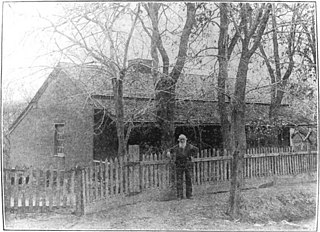
The John Steele House is the historic home of a prominent early resident of Toquerville, Utah. One of the Mormon pioneers, John Steele built the house in 1862 and lived there until his death in 1903, working as an herbal physician and serving in a number of town and county offices. Its floor plan is a rare double-parlor style.

The Antonio Vigil House is a historic building in the Old Town neighborhood of Albuquerque, New Mexico. It was built in 1879 as a rental property by Santiago Baca, a wealthy landowner who moved with his family to Albuquerque from Pecos, New Mexico in 1874. The home's original occupant was Albert Grunsfeld, a German Jewish merchant for whom Albuquerque's oldest Jewish congregation, Congregation Albert, is named. The Baca family sold the house in 1900, and after two changes of ownership, it ended up in the hands of Pilar Vigil in 1904. Her son Antonio Vigil lived there from 1922 to 1961 and the Vigil family continued to own the property at least into the 1970s. At some point the building was converted to commercial use. It was added to the New Mexico State Register of Cultural Properties in 1976 and the National Register of Historic Places in 1978.



















